It’s a tale of obsession, religion, money, passion, beauty, science, and sex—every good story should have at least some sex in it, right? And it’s a tale of mystery. Actually, it’s two interwoven tales. The first relates to the Reverend Gilbert Henry Raynor, rector of Hazeleigh, a small village in Essex, England, at the turn of the 19th century, who, besides shepherding his flock of parishioners for a quarter-century, was an avid collector and breeder of butterflies and moths. The second, subsidiary story relates to me.
Does that sound like a plot to unpack? Well, yes… so let’s start unpacking it.
Maybe the easiest route involves standing it on its head, starting with the mystery. A few falls ago, a small brown box arrived on my doorstep, addressed to “Dr. Bruce Byers,” and sent from Hirt’s Gardens, 4943 Ridge Road, Wadsworth, Ohio.1 Inside were three little bare-root gooseberry bushes of three varieties: Amish Gooseberry, Black Velvet Gooseberry, and Hinonmaki Red Gooseberry. The only other information in the package instructed me to store them in a cool dark place, dampen the roots occasionally, and plant them in a sunny place in the spring. I stashed them in my garage and nearly forgot about them, but in the spring I planted them at the front of my little garden. Two of the three survived, and I’ve been weeding around them and watching as they grew very slowly and never seemed to produce gooseberries.
Until this year, when I noticed a robin perching on my fence and ducking into the gooseberry bushes, now about three feet tall. When I investigated, I found their stems loaded with a heavy crop of mostly green berries. I googled, and the online advice about “when to pick gooseberries” seemed to say that if birds discover your gooseberries, they may harvest all of them before you get a single one. I was skeptical that my robin would wipe me out, and watched until the berries began to blush to beautiful pinks and even reds. Then, wearing gloves as recommended—gooseberries have vicious thorns and mine were no exception—I harvested the whole lot, several quarts of beautiful berries. But what to do with them?
_______
That leads me back around to the main story. When that package arrived, with no personal information anywhere about who might have sent it, my first thought, upon seeing “gooseberry,” was of the title of an essay I’d read way back in graduate school, “The Cream in the Gooseberry Fool.” It is one of a collection of essays in The Ecological Theater and the Evolutionary Play, by G. Evelyn Hutchinson, an ecologist of two generations before me, published in 1965 by Yale University Press.2
Gooseberries were never part of my family’s tradition. I never remember eating a single gooseberry in my entire life. So why did some gooseberry bushes show up on my doorstep and get me to plant them in my garden? My hypothesis was that it was one of my ecologist friends who knew about Hutchinson’s essay and had sent me the little gooseberry bushes. Jeff? Dave? Gerry? Jim? I waited for a message—”Did you get a package?” Or some other hint. Nothing.
The next spring, when I planted them, I decided to try to solve the mystery of who sent them, and test my hypothesis. I called Hirt’s Gardens in Ohio, gave them the order number, and asked who had placed it. “Oh… sorry, we only keep our order records for six months. We have no idea who ordered those and had them sent to you.”
Thus, the mystery remains. Whoever sent me those little gooseberry bushes, this year they produced a glorious crop. Maybe this story will flush out the perpetrator of the gift of gooseberries, if they’re among the friends who read this Ecologia blog.
_______
And so, on to the foundational story here, “The Cream in the Gooseberry Fool.” In his essay of that title, Hutchinson introduces us to the Reverend Gilbert Raynor and describes how his meticulous collecting and obsessive rearing of varieties of the magpie moth, Abraxis grossulariata (aka the gooseberry moth), led to a serendipitous discovery in genetics. Which of the central characters in this ecological, evolutionary, historical “play” to introduce first? I suppose it should be the moth.
The Royal Society for the Protection of Birds (now known as RSBP because they are protecting not only birds, but other species like moths and butterflies, so they’ve shifted to using only the abbreviation of their original name) describes Abraxis grossulariata like this: “This very pretty moth has variable black and white patterned wings with a yellowy-orange stripe in the middle of its forewings and near its head. It is found throughout Britain, except in the far north. The caterpillar, which is pale green with bold, black spots and a rusty line down the sides, is conspicuously coloured to warn off predators. Caterpillars feed on blackthorn, hawthorn, currant and gooseberry bushes.” Hutchinson notes that “The species is familiar in Britain wherever gooseberries and currants are cultivated, the larvae feeding on their leaves and sometimes being a pest. The adult is, in fact, often called the currant or gooseberry moth.” The species was named by Linnaeus, the founder of scientific taxonomy and nomenclature, in 1758. Its specific name, grossulariata, indicates that its host plants are gooseberries, a subgenus (Grossularia) of the large genus Ribes, comprising around 150 species of wild currents and gooseberries found in North America and Eurasia,3 of which one species has been domesticated and is growing in my garden.
![Magpie Moth, Abraxis grossulariata [note this illustration shows the typical resting position of moths, only forewings showing and hindwings covered]](http://www.brucebyersconsulting.com/wp-content/uploads/2023/10/GooseberryCream2.jpg)
It is a “very pretty moth,” and collectors of butterflies and moths (Lepidoptera) in England at the turn of the last century (1900, that is) often included this species among their most desired specimens, not only because of the striking coloration, but also because of the wide variation in color patterns within the species. It was that aspect of the natural history of Abraxis grossulariata that apparently fascinated Reverend Raynor most.
_______
Next, I suppose, I should summarize the story Hutchinson tells in his essay and focus on the Reverend Raynor, which will weave in the history of his interest in variation in gooseberry moths and its causes. I’ll let Hutchinson tell the story, mostly, quoting from his essay:
Raynor is now mainly remembered as a collector and breeder of varieties of the magpie moth, Abraxas grossulariata. This conspicuous white moth… spotted with black and streaked with yellow, is common in the Palearctic. The species is familiar in Britain wherever gooseberries and currants are cultivated, the larvae feeding on their leaves and sometimes being a pest. The adult is, in fact, often called the currant or gooseberry moth. As with many spotted insects, there is much variation in size and disposition of spots, some of which may run together, producing dark forms, or become obsolete, producing pale varieties.
But Raynor was more multidimensional than that, and Hutchinson doesn’t let that part of the story slip. Besides collecting butterflies and tending his Church of England parish for a third of his life, “he was a keen cricketer and tennis player, and he gave much help and inspiration to young people in their games. He clearly made the rectory at Hazeleigh a center of civilization for his small village during the quarter century of his incumbency.”
Collecting butterflies and moths was a fashion and a fad in Reverend Raynor’s day, and he was an avid practitioner himself. Sales of collections of Lepidoptera were an important feature of English natural history at the time. Some of the most striking and rare variants of any species, including the gooseberry moth, could fetch high prices from the most fervent collectors. One rare variant of the gooseberry moth, Abraxis grossulariata lutea, widespread but uncommon, has the whitish areas of the wing suffused with yellow, in some specimens the yellow even moves to the front wings.
Raynor knew that rare variants of the gooseberry moth were of interest to collectors, and therefore, perhaps out of both scientific and financial curiosity, he started trying to breed them.
Hutchinson, in his detailed research for his essay, managed to track down Miss C. Evelyn Croxon of Hazeleigh, who, as a girl, had assisted the Reverend Raynor in his butterfly and moth rearing. She told Hutchinson,
A peep into his [Raynor’s] study would reveal the life cycle of many rare butterflies and moths, which he bred with much success. As a child I was often instructed by him to collect caterpillars from various plants and shrubs, and I remember being rebuked by my mother for getting a rash on my hands from handling some of these creatures, but I felt nevertheless that it had all been very worthwhile!
Another of the uncommon gooseberry moth variants, named Abraxis grossulariata dohrnii,
occurs as a rare sporadic form in various parts of England and the continent of Europe, at least east to Estonia. All the wild-caught specimens are females. The black markings [of the hindwings] of dohrnii are much reduced and the ground color of the wing has a creamy tint.
Hutchinson notes that Raynor started serious rearing of the gooseberry moth in 1899, raising larvae he had obtained from different parts of England. The first specimen of dohrnii to appear in his study in Hazeleigh Rectory “emerged on July 7, 1899, one of a large number of moths produced by larvae obtained from Lancashire.” Hutchinson’s storytelling goes on—and I’m using that word deliberately, because although a scientist, he had the inclination of a writer of short stories, with a narrative line in his essays that led from the opening sentence that hooked the reader’s imagination to the dénouement in the last line:
This specimen was mated to grossulariata [i.e., a typical form of this species] and bred but, as we now would expect, its whole progeny was wild type [i.e., the typical form again]. Fortunately, Raynor was not discouraged, and, breeding from these insects, obtained in 1901 rather over a score of the aberration [i.e., the dorhnii variant], all females. When he published the account of his experiments late in the next year, all the specimens of the succeeding generation were wild type grossulariata.
It was all something of a mystery at the time. Raynor’s rearing of gooseberry moths had demonstrated that all specimens of the dohrnii variety were females, as in the wild, and that the variety appeared in alternating generations. Why?
Through Raynor’s communications with British geneticist Leonard Doncaster, his breeding experiments were serendipitously connected with the rediscovery of Mendel’s discovery of some fundamental laws of inheritance. Hutchinson continues,
At that time no example of what is now called “sex-linked” inheritance amenable to experimentation had been studied. Doncaster at once saw the extraordinary importance of the subject, and, as the result of correspondence with Mr. Raynor, matings were arranged and a critical investigation of the case was begun. The results, disclosing a "Mendelian recessive of quite a new type," were first made known late in 1902 and the breeding season of 1903.
_______
And now (apologies to impatient readers who are looking for the dénouement of this story and are familiar with the history of genetics), we should take a moment to remind ourselves of Mendel’s work. Gregor Johann Mendel, a humble Augustinian friar in Moravia (now part of the Czech Republic), had been messing around with peas in his garden, cross-pollinating pea plants with different traits, such as flower color and seed shape, and examining the results in the next generation. His detailed observations, conducted between 1856 and 1863, led him to propose the first principles of what would become the science of genetics. His work was never disseminated far, and was completely forgotten until 1900, when it was rediscovered and verified experimentally by several other scientists—at exactly the time when Raynor was making his conclusions about the unique type of inheritance of the dohrnii variant of the gooseberry moth. Raynor had discovered a unique example of “Mendelian inheritance,” sex-linked inheritance, before Mendel’s work had been rediscovered and recognized.
Why did Hutchinson say “the extraordinary importance of the subject”? Two reasons. One is that this example catalyzed the chromosomal theory of heredity. How could a trait, carried by a Mendelian gene, be associated with sex? It could be if sex determination was somehow associated with packages of genes, later called chromosomes, and the genes for some particular traits were carried on those sex-determining chromosomes. Such traits came to be called “sex-linked” traits.
The second is that a number of important human conditions (not to mention those in other species) are now known to be sex-linked. Red-green colorblindness. Hemophilia. Male pattern baldness (mostly). Some of these are trivial human conditions, some very serious diseases, and have their controlling genes on the X, female, sex chromosome.8 Depending on their dominance and recessive nature and frequency in the population, they generally manifest in males, in alternating generations. If your grandfather had male-pattern baldness or red-green colorblindness, and neither your mother or father had it, you could still get it. The genes for those traits are carried on the X-chromosome, and are “recessive,” not “dominant.” If you are a female with two X-chromosomes, one is likely to have the more common dominant gene, which will mask the recessive gene for those traits. But if you are male with an X-chromosome carrying your maternal grandfather’s recessive gene for colorblindness or baldness, passed through your mother, you will inherit it and express that trait. Same for the much more serious disease hemophilia, an inherited bleeding disorder in which the blood does not clot properly.9
But what’s going on with a trait like dohrnii wing coloration in gooseberry moths, which alternates generations in females, not males, as X-linked traits do in humans and other mammals? It turns out that in moths and butterflies (and also birds) the females are the sex with only one dose of the major sex chromosome, called Z (to contrast it with the “X” of mammals) whereas males have two Z’s—the opposite of the sex-determination system of mammals.10 So, if a female gooseberry moth gets a Z chromosome carrying the dohrnii gene—an uncommon recessive gene—she will be a dohrnii, like her paternal grandmother was.
This is just to say, Raynor’s messing around with gooseberry moths led to a revelation in the science of genetics.
_______
And that, I think, is partly, but not entirely, the explanation behind the title of Hutchinson’s essay, in which he plays with the connotations of the word “cream.” The rich, fatty stuff that rises to the surface of milk, the most valuable part to dairy farmers. And by analogy, the richest, the most significant part of something, as in the “cream of the crop.” As for the other half of the title, “the gooseberry fool,” Hutchinson exploits the double-entendre of the word “fool,” which can describe some members of our own species and is also the name of a beloved English dessert. He quotes someone who witnessed the sale of Raynor’s collection of gooseberry moth variants to English collectors:
We never saw such a jam of "gooseberries" as at Stevens' room ... when Mr. Raynor's collection was sold. Nor were there wanting samples of the gooseberry fool, mellowed though they were by some of that cream, which regards these fine aberrations as matters of scientific interest and not, as so many say, postage stamps.
In the metaphors used by the observer of the sale, the “jam of ‘gooseberries’” were the crowd of collectors, and the “gooseberry fool” were the majority among them who saw the varieties of this species only as unique “postage stamps” to add to their collections. The “cream” were the few people who recognized the scientific value of Raynor’s specimens.
Here I should mention, as Hutchinson does, another probable, but secondary, motivation, for Raynor’s extensive breeding of Abraxis grossulariata:
Raynor's entomological activities were not exclusively scientific and aesthetic, for, shortly after his munificent gift to the Zoological Museum at Cambridge [in 1907], he put his collection up to auction, realizing £487, of which nearly £200 came from 170 specially selected specimens of A. grossulariata, each provided with an aberrational name.
The value of Raynor’s collection of gooseberry moths, converted to today’s values, comes to £29,469, or about $35,000 US dollars.
The most important part of the explanation for Hutchinson’s title, I like to think, gets even richer and creamier. It goes to the heart of Raynor’s passion for rearing varieties of the gooseberry moth. Hutchinson tells us,
In an obituary of Raynor by his friend the Reverend C. R. N. Burrows, it is suggested that part of Raynor's interest in the varieties of the Lepidoptera, and in particular of the magpie moth, was due to the recent rediscovery of Mendel's writings. It is, however, clear that he started work before this had happened. In none of his published notes or papers did he demonstrate any familiarity with genetic principles. He appeared more concerned with the beauty and strangeness of his specimens and with the extraordinary potentialities for variation that the species seemed to show.
What does it mean if Raynor’s obsession with the gooseberry moth is “more concerned with the beauty and strangeness,” and its “extraordinary potentialities for variation”? Hutchinson wrote that Raynor’s “obvious delight in the protean beauty of the magpie moth” was his motivation for collecting and breeding them. My take is that the Reverend Raynor was seeking, and celebrating, a god of evolution, which he could imagine, but which was just beginning to be glimpsed in his day (following on from Darwin and Mendel). I think he was recognizing a natural principle and process that ceaselessly creates living diversity and beauty.
_______
And now, a coda: an acknowledgement of Hutchinson’s ability to convey to us this multidimensional legacy of British natural history and culture. George Evelyn Hutchinson (1903-1991) was born in England and educated at Cambridge University. After research in Italy and South Africa, he began teaching at Yale University in 1928, and spent his career there, mentoring many of the next generation of limnologists (ecologists who study lakes) such as Raymond Lindemann, and ecosystem ecologists, who would expand the foundations of “big picture” ecosystem-ecology, studying energy flows and nutrient cycling at the systems level, such as Howard Odum. But beyond his important “scientific” contributions, many of his essays display his interest in, and knowledge of, the literature and art of the Western tradition—perhaps the result of his Cambridge upbringing and education. He was a very literary ecologist. One of my favorites among Hutchinson’s essays, referenced in my story about a trip into the Sierra de las Minas mountains in Guatemala, is titled “Homage to Santa Rosalia, or Why Are There So Many Kinds of Animals.” Written in 1959, it described a trip to a tiny monastery in Italy and proposed that Santa Rosalia, a 12th century Italian saint, should be considered the patron saint of biodiversity and evolutionary studies. Lawrence Slobodkin, an American ecologist, in “An Appreciation: George Evelyn Hutchinson,”11 says that Hutchinson “contributed for more than sixty years to the fields of limnology, systems ecology, radiation ecology, entomology, genetics, biogeochemistry, a mathematical theory of population growth, art history, philosophy, religion, and anthropology.” With that spectrum of interests and contributions, he certainly qualifies as a Humboldtian and polymath.
Hutchinson ends his essay “The Cream in the Gooseberry Fool” by saying “Raynor’s skill in breeding and his obvious delight in the protean beauty of the magpie moth lie behind this and so are one of the small roots of modern science.” In this day and age, when science has become narrow and specialized away from many of the broader inquiries into human knowledge and affairs we desperately need, we need to bring back a tradition and culture among scientists that cultivates that kind of blending of science and aesthetics, and the broad, integrated questioning and thinking that Raynor, and Hutchison, exemplify.
_______
Before ending this story, what about the traditional English dessert that is the metaphor for Hutchinson’s essay? If you can get your hands on some gooseberries—maybe look for them at your local farmer’s market (there are none in mine); find plants at a local nursery or order them from Hirt’s Gardens; or hope some little starts will mysteriously show up on our doorstep someday—here’s the recipe.13 Savor it, in all its mouthwatering and mind-opening mystery as you celebrate the diversity and beauty of evolution!
Ingredients
- 2 cups gooseberries
- 4-5 tablespoons sugar (for the gooseberries)
- 1 tablespoon water
- ¼ cup elderflower liquor (optional, but authentic)
- 1½ cups whipping cream
- 1-2 tablespoons sugar (for the whipped cream)
- ½ cup whole-milk yogurt
- fresh mint leaves to garnish (optional)
Preparation
- “top and tail” the gooseberries: with kitchen shears, snip off the stems and blossom ends of each berry
- Cook gooseberries, sugar, and water in a saucepan over low heat, stirring frequently, for ten to fifteen minutes, until the fruit begins to break apart
- Use a potato masher to break down the berries to a rough puree
- Cool and then refrigerate the berries for at least an hour or up to 24 hours
- Add elderflower liquor to the gooseberry puree (this liquor was not regularly stocked in my liquor cabinet, but was easy to find; look for it for an authentic British version of this fool)
- Whip the cream and sugar together until soft peaks form
- Add the yogurt and mix together
- Fold and swirl the gooseberry puree very gently into the cream and yogurt mixture
- Spoon gently into serving dishes.
- You can serve the fools immediately, or better, refrigerate them for at least an hour before serving, or even place in the freezer for 10 minutes just before serving
- Garnish each fool with a couple of mint leaves
_______
For related stories see:
Notes and Sources:
- Hirt’s Gardens, https://hirts.com/
- Hutchinson gave a lecture to our department, Environmental and Population Biology, at the University of Colorado in Boulder when I was a graduate student there. He was an honored elder in evolutionary ecology by then, in his mid-70s, and professors and students alike were thrilled to have him speak to us.
- Lisa M. Schultheis and Michael J. Donoghue. “Molecular Phylogeny and Biogeography of Ribes (Grossulariaceae), with an Emphasis on Gooseberries (subg. Grossularia).” Systematic Botany 29, no. 1 (2004): 77–96.
- Source: RSBP (Royal Society for the Protection of Birds) https://www.rspb.org.uk/birds-and-wildlife/wildlife-guides/other-garden-wildlife/insects-and-other-invertebrates/moths/magpie-moth/
- Abraxis grossulariata, https://en.wikipedia.org/wiki/File:Abraxas_grossulariata_MHNT.jpg
- This specimen, bred by Raynor, is apparently still for sale to collectors: https://www.worthpoint.com/worthopedia/magpie-moth-aberration-ab-lutea-type-502342807
- Abraxis grossulariata var. dohrnii, https://www.europeana.eu/en/item/853/NHMUKXBMNHXEXXBMNHXEX1860894
- And “yes, Virginia,” sex is binary. Biological sex in the myriad of species that have evolved over billions of years of life on Earth is almost universally binary, determined by the makeup of the “sex chromosomes,” nominated “X” and “Y” in mammals. The “X” chromosome, sort-of, almost as big as some other chromosomes, contains some genes; the “Y” chromosome, tiny and almost devoid of trait-determining genes, seems to have been designed by evolution to “flip” reproduction into a binary mode. The evolutionary advantage of that binary mode is that it forces individuals in a population to exchange their genes in order to reproduce, and combine the genes that were tested in their own phenotype in a given environment with those from other individuals whose genes and phenotype had been similarly tested. Biological sex is clearly binary and selected by evolution, no matter what the current human cultural debates that try to muddle sex with something called “gender” may propose.
- Centers for Disease Control and Prevention, “What is Hemophilia.” https://www.cdc.gov/ncbddd/hemophilia/facts.html#:~:text=Hemophilia%20is%20usually%20an%20inherited,can%20help%20to%20stop%20bleeding
- Ken Sahara, Atsuo Yoshido & Walther Traut. 2012. “Sex chromosome evolution in moths and butterflies.” Chromosome Research 20: 83–94. https://link.springer.com/article/10.1007/s10577-011-9262-z
- Lawrence B. Slobodkin. “An Appreciation: George Evelyn Hutchinson.” Journal of Animal Ecology 62, no. 2 (1993): 390–394.
- G. Evelyn Hutchinson. https://en.wikipedia.org/wiki/G._Evelyn_Hutchinson
- Modified from April J. Harris, “Gooseberry Fool, a Taste of British Summer,” https://apriljharris.com/how-to-make-gooseberry-fool/

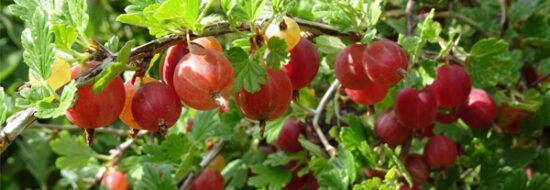
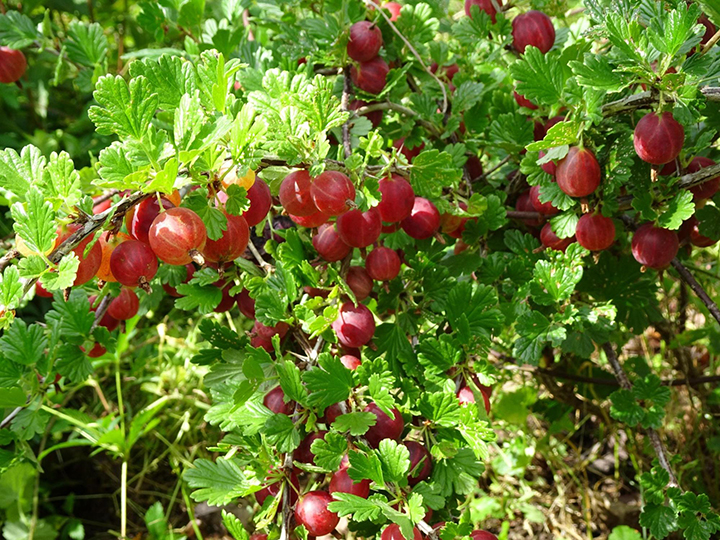
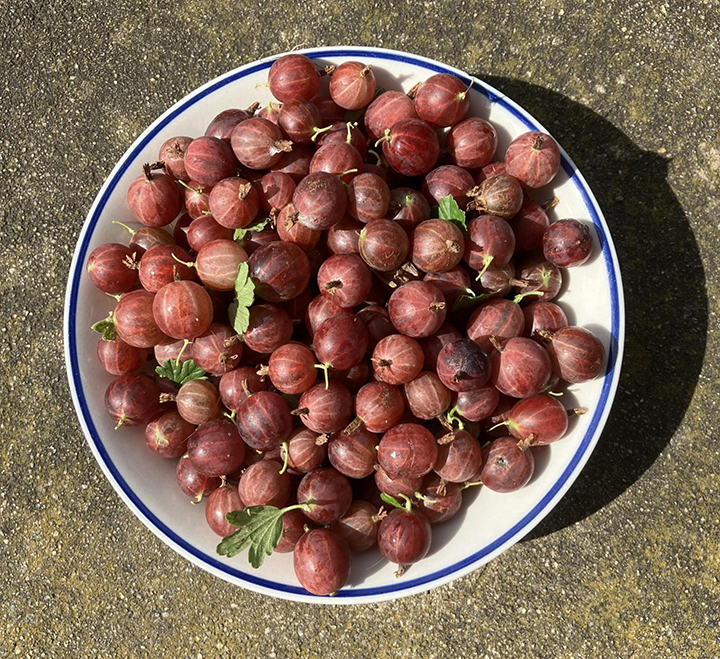
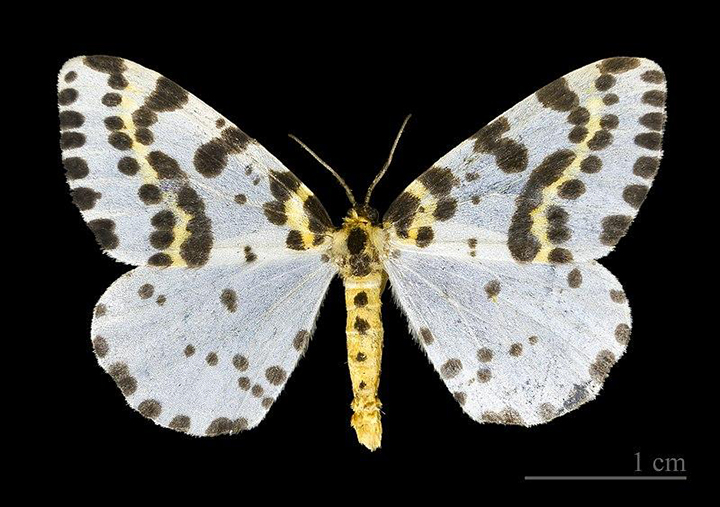
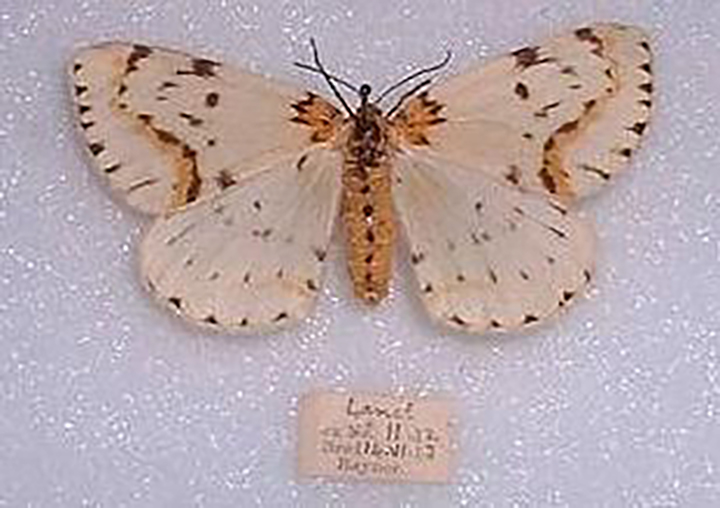
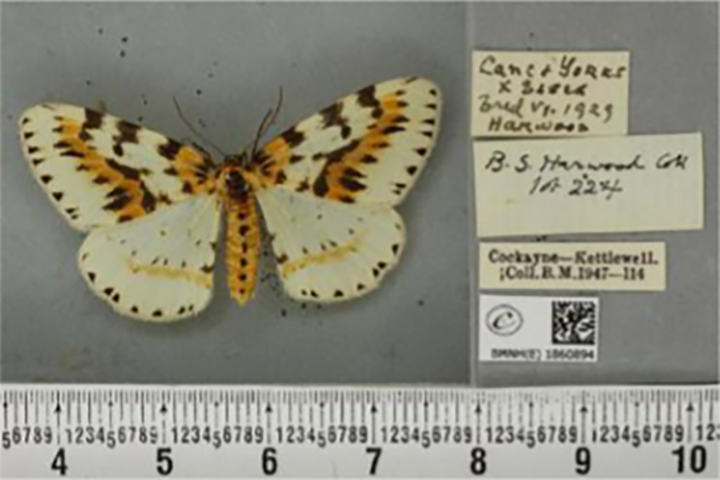
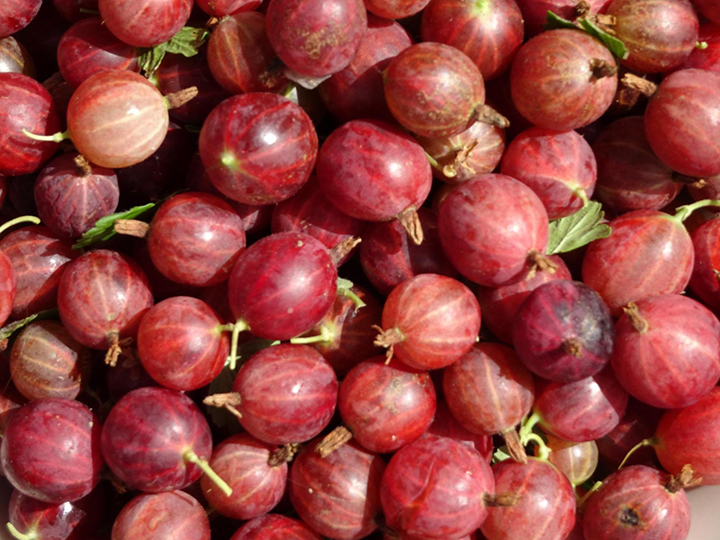

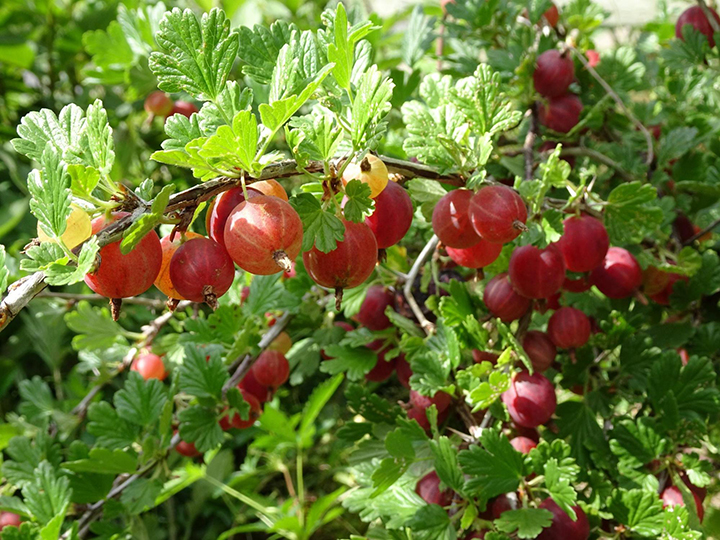
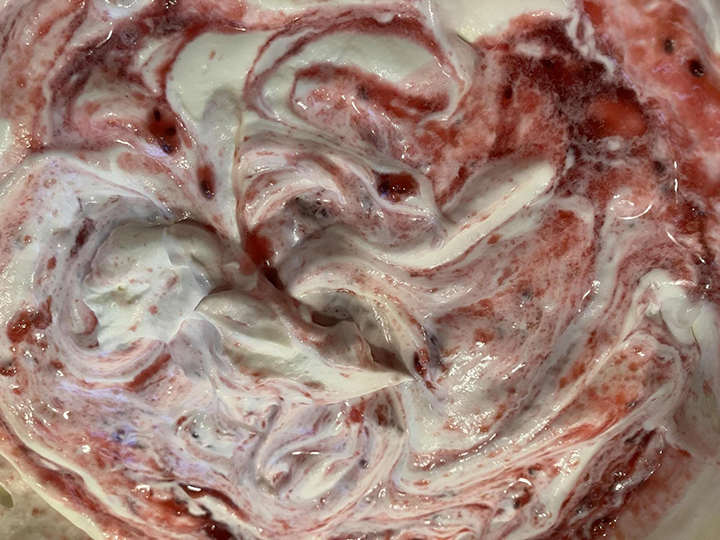



October 25, 2023 4:21 pm
Thanks, Bruce! Always great to hear from you! I learn something every time.
dave